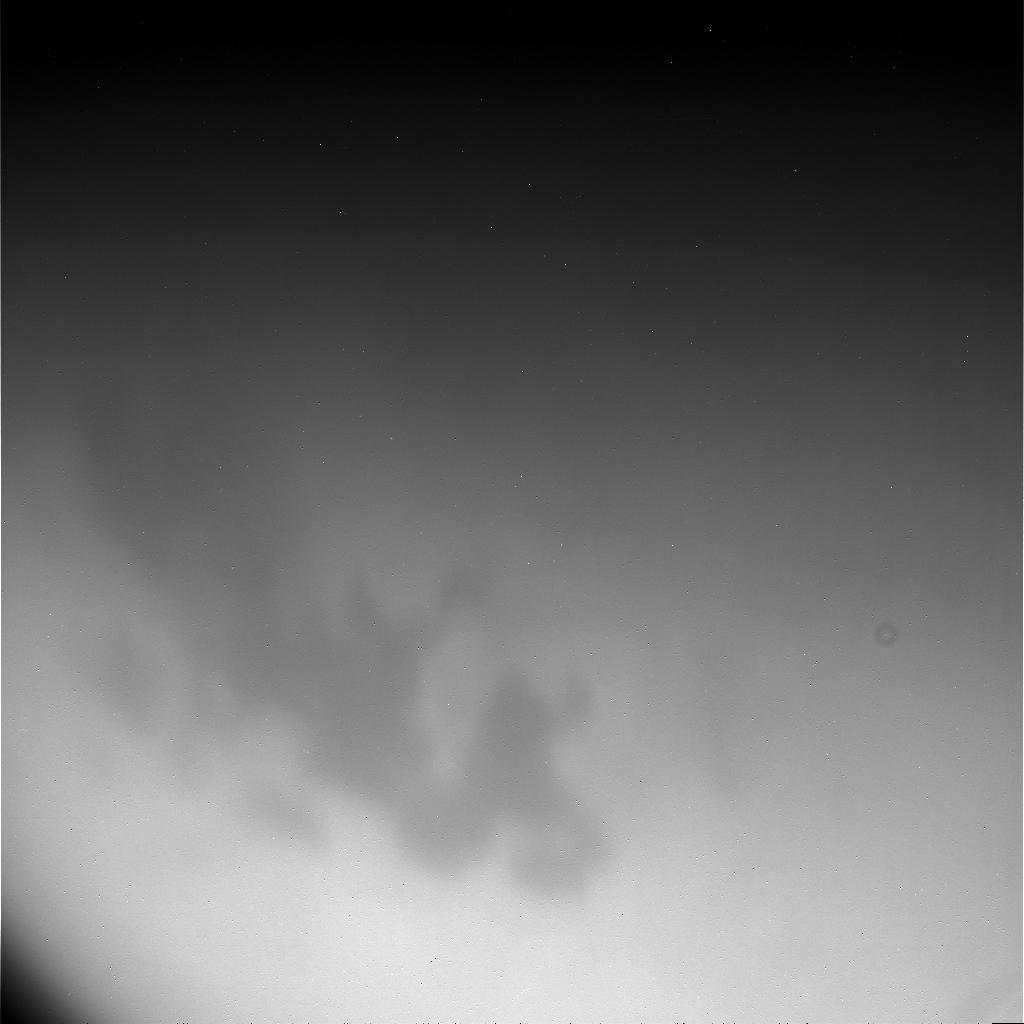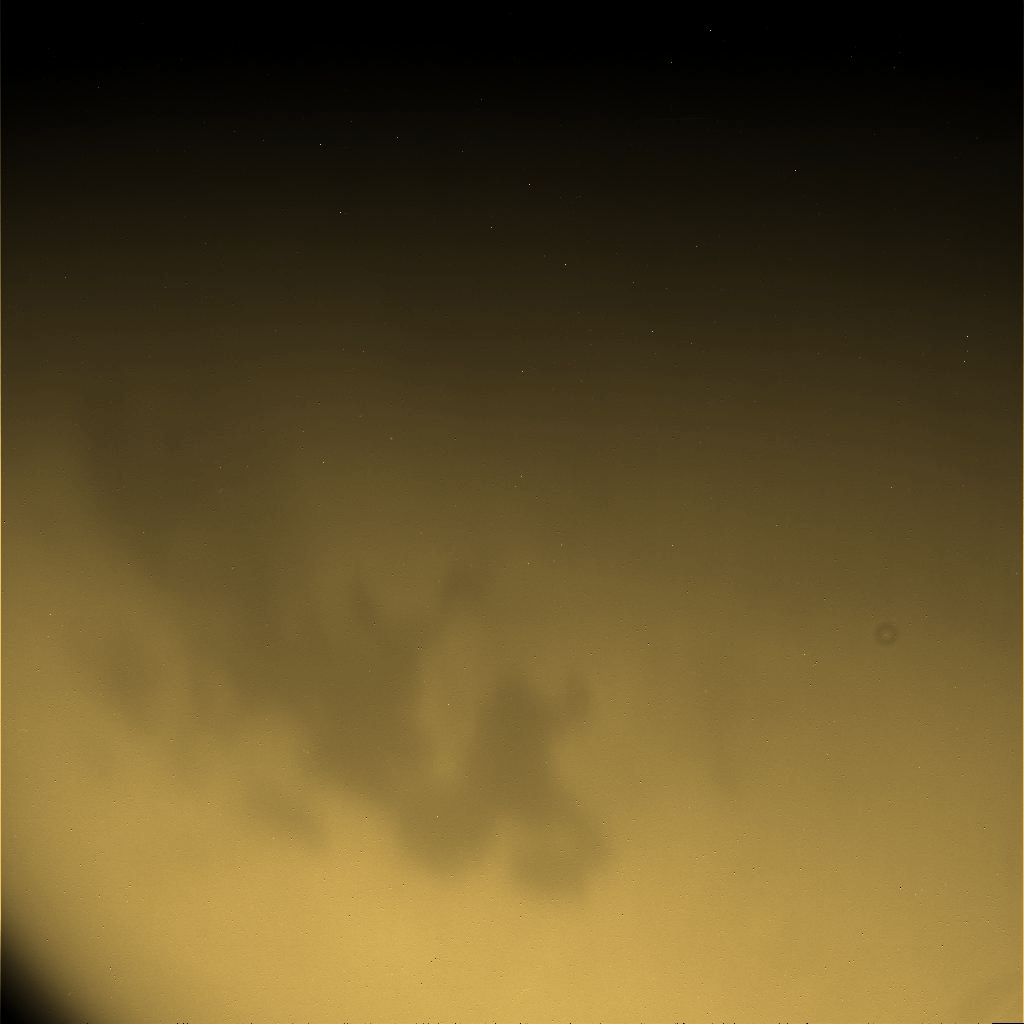January 21, 2021 : A New Study Involving Valerio Poggiali Implies That The Depth Of Kraken Mare May Reach 1,000 Feet Near Its Center
A recent study entitled « The Bathymetry of Moray Sinus at Titan's Kraken Mare », published on December 4, 2020 in the Journal of Geophysical Research and proposed by a team involving Valerio Poggiali who is a research associate in Cornell Center for Astrophysics and Planetary Science (CCAPS), in the College of Arts and Sciences, suggests that the largest pool of liquids on Titan, Kraken Mare, may be 1,000 feet deep near its center. The determination of the amount of liquid methane present on Titan's surface or beneath the external crust can bring major clues upon the hydrology or the meteorology of Saturn's largest moon. Researchers have mobilized the Radar Mapper or the Radar Altimeter of the Cassini spacecraft in order to determine the depth of pools of liquids like Ligeia Mare and Kraken Mare. Kraken Mare, Ligeia Mare and Punga Mare appear to be the largest lakes or seas in the high latitudes of the northern hemisphere. The high latitudes of the northern hemisphere appear to be much more humid than the high latitudes of the southern hemisphere which appear much more humid than the low or mid-latitudes of the giant moon. The pools of liquids in the north polar region are likely dominated by methane.
Thanks to the low environmental temperature and thanks to the relatively high atmospheric pressure on Titan's surface, methane and ethane can appear in their liquid form on the surface. The atmosphere of Titan, dominated by molecular nitrogen, contains a relatively significant concentration of methane. That's why researchers have long imagined or anticipated the presence of liquid methane or liquid ethane on the surface of the Opaque Moon. Ontario Lacus was the first pool of liquids clearly identified on Titan. Later, the lakes, seas and rivers of the high latitudes of Titan's northern hemisphere were unveiled by the radar data or the infrared or near-infrared data acquired from the Cassini orbiter. Kraken Mare is by far the largest pool present on the external crust of Titan. Kraken Mare is not a pond because its maximum depth is relatively high. The team of Valerio Poggiali, composed of Alex Hayes, professor of astronomy and director of CCAPS, Jonathan Lunine, the David C. Duncan Professor in the Physical Sciences, and chair, Department of Astronomy, Marco Mastrogiuseppe, a former Cornell postdoctoral researcher who is now research associate at Sapienza University of Rome in Italy, Alice Le Gall from the Institut Universitaire de France, Paris and research associates Illeana Gomez-Leal and Daniel Lalich, advanced that Kraken Mare may be well suited for an exploration campaign led by a potential robotic submarine.
The landscape of the Opaque Moon is clearly reminiscent of typical landscape features on our planet. The images obtained from the Huygens probe during its atmospheric descent on January 14, 2005 had clearly revealed a familiar landscape containing bright hills, a dark or brown plain as well as a network of dark drainage channels in the area of the bright hills. The panoramic views captured from the Huygens probe during its parachuted descent allowed us to realize that potential rainfall events can take shape in the low or mid-latitudes of the giant moon. Rainfall events are likely to regularly occur in the land of lakes, seas or rivers in the high latitudes of the northern hemisphere. Valerio Poggiali who is the lead author of the research work pointed out : « The depth and composition of each of Titan's seas had already been measured, except for Titan's largest sea, Kraken Mare - which not only has a great name, but also contains about 80% of the moon's surface liquids. » Kraken Mare appears to be dominated by liquid methane and may contain a certain fraction of ethane and dissolved nitrogen.
The Cassini spacecraft has performed numerous flybys of Saturn's largest moon during its long journey in the Saturn System from 2004 to 2017. Its eyes have obtained key infrared or near-infrared data as well as key radar data. The radar views of the land of lakes, seas and rivers in the high latitudes of the northern hemisphere have clearly unveiled the shape of those remarkable landscape features. The discovery regarding the relatively high depth of Kraken Mare was made thanks to data acquired during the T104 flyby of the Opaque Moon performed by the Cassini orbiter on August 21, 2014. The Cassini spacecraft collected data related to Ligeia Mare, a major pool of liquids in the northern hemisphere where the phenomenon of the « Magic Island » has been identified. Bright features resembling islands and which turned out to be transient features had been observed in the radar data. What were those bright features ? Were they really islands or icebergs ? Did they represent a field of bubbles related to a cryovolcanic activity for instance ? Nobody really knows. Subsequent radar views of the area revealed that those bright features had progressively vanished.
The phenomenon of the Magic Island in Ligeia Mare was first identified by specialists from Cornell University. During the T104 flyby, the Cassini orbiter which moved at a speed of 13,000 miles per hour (Almost 21,000 kilometers per hour), nearly 600 miles (around 966 kilometers) above the surface of the Opaque Moon, resorted to its radar altimeter to determine the depth of the giant pool Kraken Mare and, in particular, Moray Sinus, an estuary found at the northern end of the exotic sea. The researchers from the Cornell University in collaboration with engineers from NASA's Jet Propulsion Laboratory have been in a position to determine or to discern the bathymetric characteristics or the depth of the lake or sea by determining the radar's return time differences between the surface of the liquid area and the bottom of the sea or lake. They also managed to determine the composition of the sea by discerning the amount of radar energy absorbed during the movement of the radar signal through the liquid. Thus, the Moray Sinus estuary appears to be approximately 280 feet deep (or about 85 meters deep).
Moray Sinus appeared to be less deep or shallower than the central part of Kraken Mare since the central part of Kraken Mare appeared too deep for the determination of its depth on the basis of the radar signals sent by the Radar Altimeter. Surprisingly, planetologists were in a position to determine that the liquid of Kraken Mare, primarily composed of a mixture of methane (CH4) and ethane (C2H6), was mainly composed of methane and that it had a composition similar to that of the second largest pool of liquids of the region Ligeia Mare. Prior to the flyby which allowed us to obtain key data regarding the depth of Kraken Mare, some researchers had speculated that the concentration of ethane inside Kraken Mare was higher due to its relatively high size and due to the fact that the pool or sea extends to the lower latitudes of the giant moon Titan. The relatively limited differences in the composition of the lakes or seas found in the high latitudes of the northern hemisphere represent a significant finding that will allow scientists to better assess models of the hydrologic system or the meteorology of Saturn's largest moon. The meteorology of Titan and the meteorology of the Earth unveil clouds or rainfall events but they mobilize completely different molecules which implies differences in the dynamics or in the chemistry of the lakes, seas or rivers.
Kraken Mare will likely be a priority if we decide to send a robotic submarine to explore a pool of liquids on Titan. Kraken Mare appears to be the largest stable pool of liquids beyond the Earth. In fact, Kraken Mare is almost the size of all five Great Lakes for instance. Valerio Poggiali advanced that the atmosphere of the Orange Moon may resemble the atmosphere of the early Earth. He added that the determination or the evaluation of the depth or the composition of Kraken Mare and the Moray Sinus estuary is a major breakthrough because it allows us to better evaluate or understand the hydrology related to methane on the giant moon. However, he admitted that we still have to solve numerous mysteries regarding Titan. Planetologists try to determine the origin of the methane found on the surface or in the atmosphere of the Opaque Moon. At the level of Titan, more than a billion kilometers from the Sun, the radiations from our star, which are approximately 100 times less intense than at the level of the Earth which evolves about 10 times closer to the Sun than Saturn and Titan, interact with the methane molecules of the atmosphere to engender ethane molecules in particular.
So, how can we explain the relatively significant concentration of methane in Titan's atmosphere ? The molecule should have completely or almost completely disappeared over geologic time scales. Valerio Poggiali argued that over periods of roughly 10 million years, the conversion process between methane molecules and ethane molecules via the action of radiations from the Sun is supposed to completely deplete the amount of methane present on Titan's surface. The researcher imagines that in the distant future, a submarine, probably devoid of any mechanical engine, will explore the exotic sea Kraken Mare. He concluded : « Thanks to our measurements, scientists can now infer the density of the liquid with higher precision, and consequently better calibrate the sonar aboard the vessel and understand the sea's directional flows. » Let's recall that the density of liquid methane in the harsh environment of Titan is lower than the density of liquid water on Earth in its much warmer environment. The mean density of the lake or sea will be closely related to the concentration of each molecule or element within the pool. The study upon the determination of the depth of the central part of Kraken Mare obtained funding from NASA.
- To get further information on that news, go to: https://news.cornell.edu/stories/2021/01/astronomers-estimate-titans-largest-sea-1000-feet-deep .

